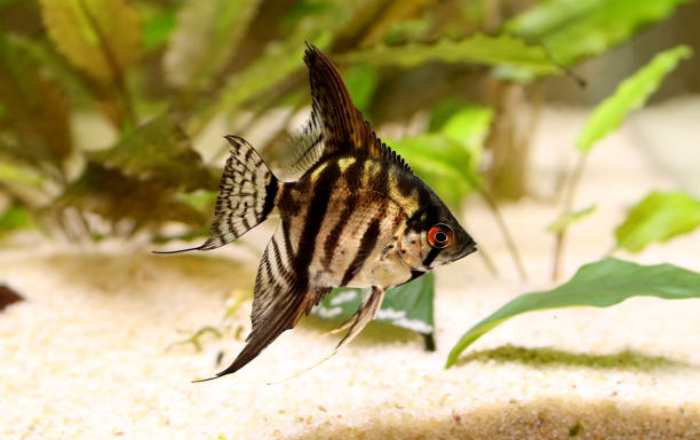Marble angelfish, known for their striking appearance and graceful movements, are a popular choice for many aquarium enthusiasts. Proper care is essential to ensure these beautiful fish thrive in your aquarium.
Everything You Need To Know About Caring For Marble Angelfish:
Aquarium Setup
Marble angelfish require a spacious tank to accommodate their size and swimming habits. A tank size of at least 20 gallons is recommended for a pair of angelfish. Provide plenty of hiding spots with plants, driftwood, and rocks, as well as open spaces for swimming.
Water Parameters
Maintain stable water parameters to keep your marble angelfish healthy. They prefer slightly acidic to neutral water with a pH range of 6.5 to 7.5 and a temperature between 75°F to 82°F (24°C to 28°C). Regular water testing and changes are crucial for optimal conditions.
Filtration and Aeration
Invest in a quality filtration system to keep the water clean and well-oxygenated. Angelfish are sensitive to water quality, so a powerful filter and regular water changes are necessary to remove waste and maintain good water flow.
Diet
Marble angelfish are omnivores and will accept a variety of foods. Offer them a balanced diet consisting of high-quality flakes, pellets, and frozen or live foods such as bloodworms, brine shrimp, and daphnia. Feed them small amounts several times a day, ensuring they consume all the food within a few minutes.
Tank Mates
Angelfish are generally peaceful but can be territorial, especially during breeding. Choose tank mates carefully, avoiding aggressive or fin-nipping species. Good tank mates include peaceful community fish like tetras, rasboras, and dwarf cichlids.
Breeding
If you’re interested in breeding marble angelfish, provide them with a flat surface like a broad leaf or slate for spawning. The pair will clean the surface and deposit their eggs, which they will guard vigorously. Once the eggs hatch, you can feed the fry with infusoria or commercially available fry food until they are large enough to accept regular fish food.
Tank Maintenance
Regular maintenance is essential for keeping your aquarium and its inhabitants healthy. Perform weekly water changes of 25% to 30% to remove accumulated waste and replenish essential nutrients. Clean the substrate and filter regularly to prevent the buildup of debris.
Disease Prevention
Monitor your angelfish for signs of illness, such as loss of appetite, abnormal swimming behavior, or visible lesions. Quarantine new fish before introducing them to the main tank to prevent the spread of diseases. Maintain good water quality and provide a balanced diet to boost their immune system and prevent common ailments.
Behavior and Compatibility
Marble angelfish are generally peaceful and can be kept in community tanks with other non-aggressive species. However, they may become territorial during breeding or if they feel threatened. Provide plenty of hiding spots and visual barriers to reduce aggression and stress.
Observation and Interaction
Take the time to observe your marble angelfish regularly to ensure they are healthy and thriving. Pay attention to their behavior, appetite, and overall appearance. Interact with them during feeding times to build trust and reduce stress.
By following these care guidelines, you can create a suitable environment for your marble angelfish to thrive and display their natural beauty. With proper care and attention, these captivating fish can provide years of enjoyment in your aquarium.

